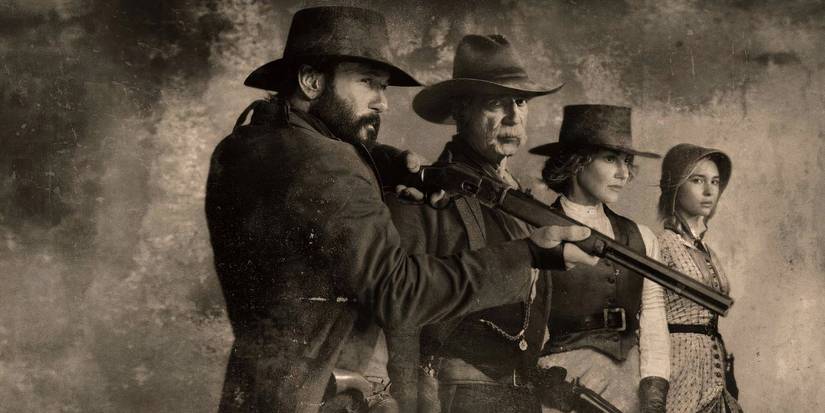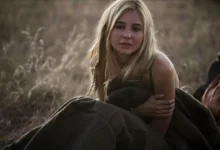1883 Officially Confirmed an Unfortunate Truth About Taylor Sheridan’s Yellowstone Universe
Taylor Sheridan’s Yellowstone franchise started with the TV series of the same name in 2018, and from then on, it has become one of the most popular phenomena in television. Given its widespread success, Paramount+ was quick to offer more Western projects to the beloved creator, leading to two spin-offs: 1883 and 1923. Both the spin-offs and the original series are finished. Still, there are more series from the Sheridanverse coming, including one show following Kayce Dutton, another focused on Rip and Beth, one about Jimmy’s life at the 6666, another revolving around a New York family, and a third prequel set in 1944. However, with three shows concluded and many spin-offs in the works, one thing about the Taylor Sheridan Universe has become clear: Yellowstone projects work much better as a limited series. While the original show over-extended its stay and eventually disappointed fans with the finale, and 1923 gave a subpar second season, 1883‘s 10-episode story was absolutely perfect. 1883 proves that more is less, and that these Western stories stand out when Sheridan focuses on realistic character development and an engaging story with a proper ending.
1883’s One-Season Structure Made It Taylor Sheridan’s Strongest Yellowstone Series

The prequel to Yellowstone, 1883, tells the story of James Dutton, John’s ancestor who created the Yellowstone Dutton Ranch. In a post-Civil War United States, James takes his family from Tennessee on a challenging journey close to the Oregon Trail, looking for a better life on the other side of the country. In this sense, 1883 isn’t really about ranching, but about the Dutton family’s struggle to get to Montana in search of a better life. James, his teenage daughter Elsa (who also narrates the story), his 5-year-old son John (presumably the first John in the family), and his wife Margaret prove the Duttons’ toughness during their travels. They have to contend with wilderness, assassins, rivers, the violent Germans in their caravan, and more. As they survive, save innocent people, and showcase their wisdom and kindness, the audience gets pretty attached to this family. However, Elsa is sadly shot with a poisoned arrow during a violent encounter with Lakota warriors. She survives the wound, but her liver is heavily damaged, and she dies slowly. His father chooses the land for the Yellowstone Dutton Ranch as the place where he buries Elsa, imbuing the place with family bonds, his daughter’s legacy, and the love of a father.
While Paramount+ said that they wanted another season of 1883, Taylor Sheridan said it wasn’t possible. Some of the main characters had already passed away, not only Elsa but also Sam Elliott’s Shea Brennan. Making another season meant going on without crucial characters. He eventually explained the fate of the family in Yellowstone‘s flashbacks and continued the story many years later in 1923, but 1883 remains a one-season masterpiece. Sheridan was right not to add more to the story in 1883; it was, at its core, a tale of travel, migration, and unlikely survival against both nature and people. A second season would have seen James struggling, taking down cowboys, and making shady deals, which would have taken away from the bittersweet, tragic tone from the end of season 1. 1883 was perfect in its tight story arc and full-circle character development. Shea makes the trip of a lifetime to show the ocean to the part of his wife that he carried with him, and then takes his life. Elsa grew up more than most people in a couple of months, only to die later in Montana, but her impact continues on the characters in Yellowstone. Noemi and Thomas find love unexpectedly and likely settle down happily after the journey. James, however, doesn’t learn from his violent ways and greedy nature, and ends up dying in the hands of thieves. The ending of 1883 is a perfect tragedy that explains human nature, the will to live, the need to explore and conquer, and the consequences of biting more than you can chew. The show didn’t need more; continuing would have butchered its beautiful message.
Yellowstone and 1923 Struggled with Long-Term Storytelling

While 1883 was a perfect story from beginning to end, the same can’t be said for Yellowstone and 1923. The original show and the second prequel spin-off struggle to keep consistent storylines. Eventually, character development was butchered, plots were forgotten or dragged too long, and in both cases, the ending is unsatisfactory. Yellowstone started with a solid premise of cowboy life, capitalism and land ownership, politics, and dysfunctional family dynamics. As the show progresses, the message gets blurry, and the story revolves around fan service and shock factor. The Dutton family is attacked several times, and none of them (except the always forgotten Lee) ever dies. Multiple shotguns, cancer, bomb explosions, ridiculous fights, and absurd shenanigans plague the series, making it a highly unrealistic tale that stops discussing the controversy around land, cattle raising, and cowboys. In the end, John dies an anti-climactic death, Beth and Rip create an unlikely idyllic romance given their personalities, and Jamie, the terrifying and twisted antagonist, dies easily in the hands of Beth. The show built up several plots and positioned characters in specific roles only to abandon everything at the end for a pseudo-happy ending and a simplistic message about the loveliness of the cowboy’s lifestyle.
1923‘s second season is even worse than the last season of Yellowstone. The first season sees the development of the family, introducing Harrison Ford and Helen Mirren as Jacob and Cara Dutton, the distant family members who take care of John and Spencer after their parents’ death. There is also the shocking death of John and his wife, the sweet yet complicated romance between Jack and Elizabeth, and the development of Spencer as a character who has survived war and horrible circumstances with significant scars but who falls in love with wealthy Alexandra. In the meantime, a threat rises against the Yellowstone Dutton Ranch, as Banner thirsts for revenge and allies with cunning and greedy Donald Whitfield. All the pieces were in place, and all the second season had to do was to land them. However, 1923 sacrificed plot and character development to shock audiences. The second season is a dragging storyline about Spencer and Alex trying to get home (with more inconveniences that are plausible getting in the way), and the family in Montana fighting against nature, weather, capitalism, and a rising war, proving that absolutely everything horrible can happen in 8 episodes if Sheridan forgets about the plot. In only a year, Alex lost her money, her husband, and was sxxually ab*sed, violated by migration, assaulted, robbed, and eventually came close to death in the snow, but dies when she decides not to amputate her limbs (her premature baby survives, though!). In the same year, most people get shot, Elizabeth almost gets rabies, and Jack dies. However, Spencer solves absolutely all problems as soon as he arrives. All is unrealistic, over-the-top, and messy, and honestly, fans were glad it ended.
The Unfortunate Truth About the Sheridanverse

Taylor Sheridan’s writing shines in tight arcs but falters with extended plotting. This might be because the Yellowstone franchise relies heavily on drama, fights, and survival. Eventually, the story falls after repetitive tragedy and intensity, which is hard to sustain over the years. With only seasons, 1923 is already mainly fillers and shock, forgetting about its own premise. Yellowstone, which had more elements to explore, started stumbling as fast as its second season (Jamie’s uninvestigated m*rder, the Beck brothers’ ridiculous mafia activity, Dan’s character floating in the background, and Monica’s storyline outside the Duttons are some storylines that showcase the lack of consistency in the series). 1883, however, proves that Sheridan is capable of excellent, tight, consistent, and satisfying plots, as long as he keeps it in one single season and a contained story. The audience doesn’t need these shows to last indefinitely, filled with more characters, stories, and assassination attempts, because none of that will enrich the story. With so many Yellowstone spin-offs offering great ideas on how to explore not only the Duttons but also the cowboys and the Western genre, it’s an excellent time for Taylor Sheridan to decide to turn the franchise into an anthology. Limited, single-season TV series that are well-written and finished on time. Each of these spin-offs could deliver solid emotional punches and rewarding experiences with just one season, which would even allow for more interesting guest stars and a dynamic storytelling experience. Yellowstone is a great idea, and tweaking its execution a bit could make for the most iconic Western universe on TV.



